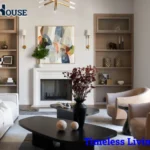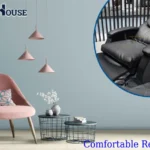Have you ever gazed up at the attic of your home and imagined all the potential that dusty, neglected space holds? Attic conversions are becoming an increasingly popular home renovation project for adding valuable living area to a home without the high costs of an addition. Transforming an attic into a functional room can create space for a bedroom, home office, playroom, or storage area. However, attic conversions require careful planning and execution to be successful. This comprehensive guide will provide you with everything you need to know about evaluating the feasibility, costs, and process of converting an attic into livable space.
Assessing the Feasibility of an Attic Conversion
Before diving into an attic conversion project, the first step is determining if your attic is a good candidate for renovation. There are several important factors to consider:
- Permits and Regulations – Most attic conversions require permits, which means the new space will have to meet current building codes and zoning regulations. Research local requirements to ensure the project is allowed in your area.
- Structural Integrity – A critical factor is assessing whether the existing roof structure can handle the load of being converted into living space. Have a structural engineer inspect the integrity of the roof and advise on any necessary modifications like adding support beams.
- Headroom – In most cases, a converted attic space must have a minimum ceiling height of 7 feet to meet code requirements. Evaluate whether there is sufficient headroom or if raising the roof is possible.
- Stairs – Creating access to the attic with a proper staircase is required. Determine if stairs can be adequately accommodated.
- HVAC – Converting an attic typically requires installing proper heating, cooling, and ventilation. Assess if your existing HVAC system can support the additional load.
Carefully examining these elements will reveal whether your attic can realistically and safely be transformed into livable area. If the space passes this initial feasibility assessment, you can move forward in planning the conversion details.
Cost Considerations for an Attic Conversion
Attic conversions involve significant upfront investments, with the average cost per square foot ranging from $400-$500 depending on the specifics of the project. Here is an overview of the types of expenses to factor into your budget:
- Framing and Insulation – Building interior walls, adding insulation, and potentially raising ceiling/roofline all require framing lumber and insulation materials. This can cost $15,000 or more.
- HVAC – Heating, cooling, and ventilation systems specially designed for attics average $4,000-$8,000 depending on size.
- Electric and Lighting – Wiring, electrical panel upgrades, adding fixtures and lights usually run $3,000-$5,000.
- Drywall – Drywall materials and labor for fire-rated attic drywall can cost $3,000 or more.
- Flooring – New flooring options like carpet, laminate, or tile cost approximately $3-5 per square foot.
- Labor – If hiring contractors for framing, HVAC, electrical, drywall, flooring, etc., labor averages $40-$65 per hour.
- Stairs – Stairway construction typically ranges from $1,500-$3,000.
- Windows – Adding attic windows or skylights average $300-$700 each.
- Miscellaneous – Other costs like permits, architectural drawings, contingency funds.
Total average budget range: $15,000-$30,000
Performing portions of the renovation yourself can potentially lower costs, but be realistic about DIY abilities. Thoroughly estimate all anticipated expenses when developing a conversion budget.
Structural and Safety Precautions for Attic Conversions
Altering the structure of your attic to create living space requires careful attention to critical structural and safety issues. Here are important factors to address:
Framing and Insulation
Attic floors must be sturdily framed to handle living loads. Use engineered joists or strengthen existing ones. Insulate walls and ceilings to R-30 rating or higher to handle temperature extremes.
Ventilation
Proper ventilation is vital for maintaining air quality and inhibiting moisture buildup. Install gable vents, soffit vents, and exhaust fans throughout the attic.
Fire Safety
Use fire-rated drywall on the ceilings and walls as an essential fire prevention measure. Also, include fireblocks in framing and seal holes between floors.
Electrical Wiring
An attic conversion usually requires a 200 amp electrical service and GFCI outlets. Avoid overloading circuits and use appropriate overhead lighting.
Emergency Exit
Include at least one emergency egress point like a door, window, or stairway sized properly for safe exiting in case of fire or collapse.
Addressing these areas ensures the structural integrity and safety of the space. Also consider needs like plumbing and soundproofing during the design process.
Design and Aesthetic Elements for an Attic Conversion
Converting an attic offers wonderful potential for creating a stylish, appealing new living space in your home. Here are some design tips:
Lighting
Strategic lighting is crucial to make the most of an attic’s unique architecture. Use directional task lighting and dimmable fixtures to control the mood. Skylights and dormers also allow natural light to fill the space.
Color Scheme
Choose light, neutral colors for the walls, ceilings and floors to open up the space and give it an airy vibe. Accent with bolder colors in furnishings and decor.
Noise Control
Soundproofing using insulation helps reduce echoes and amplifications in an attic. Install a white noise machine or sound-absorbing materials to maintain peaceful ambient noise.
Storage Solutions
Attics lend themselves perfectly to built-in storage like drawers under eaves, closet systems, and multipurpose furniture. Maximize every inch to keep the space decluttered.
Ventilation
Integrate ventilation into the aesthetic design. For instance, accent functional gable vents with attractive casing trim or buy vintage-style registers.
Take advantage of an attic’s distinctive architecture like sloped ceilings and trusses by complementing these features in your design choices. Creativity and careful planning are key to making an attic conversion stylish and functional.
HVAC and Utility Considerations for an Attic Conversion
One of the biggest technical considerations when converting an attic is properly planning and installing HVAC systems plus expanding utility connections. Here are important factors to address:
Heating and Cooling
Attics require HVAC systems designed specifically for unfinished spaces like compact ductless mini-splits or electric baseboards. Upgrade your main system if needed to accommodate the extra area.
Ventilation
Adequate ventilation is critical for attic HVAC systems to function efficiently and prevent moisture issues. Work with HVAC pros to integrate ventilation like ridge vents.
Electrical
Confirm your home’s electrical panel can handle the added usage from the converted attic. Running new wiring and adding circuits just for the attic is recommended.
Plumbing
If adding bathroom(s) or kitchenette, the attic space will need drain and water lines. This may require updating main plumbing stacks or running new supply lines.
Fire Sprinklers
In many cases, fire sprinklers are required if the converted attic increases total home square footage over a certain threshold. Sprinkler installation averages $3-$5 per square foot.
Proper HVAC and utilities are essential to a comfortable, functional attic living space. Develop a comprehensive plan for addressing these systems early in the conversion process.
Deciding Between a Professional vs. DIY Attic Conversion
When planning your attic conversion, one of the biggest decisions is whether to hire contractors or take on the project as a DIY endeavor. Here are some pros and cons to weigh for each approach:
Professional Conversion
Pros: Expertise in specialized tasks, compliance with regulations, high-quality finishes, licensed tradespeople for electrical/plumbing work.
Cons: Higher overall cost, loss of control over some details, potential of overpaying for unneeded work.
DIY Conversion
Pros: Greater cost savings, customize every detail, sense of personal accomplishment and pride.
Cons: Steep learning curve for complex skills, easy to make costly mistakes, quality very dependent on abilities.
In most cases, a hybrid approach is recommended – hire professionals for the structural, electrical, and plumbing portions, while handling painting, trim, decorating yourself. Assess your own DIY comfort level to find the right balance.
Financing Options for Attic Conversions
The costs of an attic conversion may require financing above and beyond your existing renovation budget. Here are some options to explore:
Cash-Out Refinance
If you have sufficient equity, a cash-out mortgage refinance will allow you to tap funds for the project while potentially lowering your interest rate.
Home Equity Line of Credit (HELOC
A HELOC offers revolving access to your home’s available equity, so you can draw funds as needed for the attic conversion without high fees.
Personal Loans
Personal loans from banks or credit unions offer fixed-rate financing that can be used for home renovations and paid back over time. Shop for the lowest rates.
401(k) or Retirement Account Loans
Some choose to borrow against their own retirement savings and repay themselves over 5 years. This should only be considered if other financing options are unavailable.
0% Credit Card Promotions
Signing up for a new credit card with an intro 0% APR period can provide 12-18 months of interest-free financing, but the balance must be fully paid by the end of the promo.
Home Improvement Grants
For low-income homeowners, HUD and other programs provide home improvement grants, though funds are limited. Veterans can also check VA grant eligibility.
Evaluate both the upfront and long-term costs of any financing option before committing to ensure it aligns with your budget.
Conclusion: Bringing Your Attic Conversion Vision to Life
Converting an attic into livable space is a complex process but can result in invaluable added square footage and improved home functionality. The keys are realistically assessing your attic’s potential, budgeting for all necessary steps and costs, hiring qualified professionals as needed, and addressing all structural and system requirements. While attic conversions require significant investment, the long-term benefits for you and your family make the project worthwhile. With proper planning and a commitment to safety, you can transform your attic into the stylish, comfortable living area you’ve always imagined.




